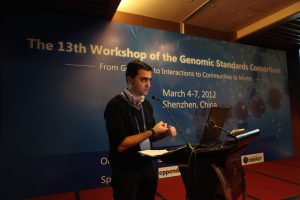
A correspondence we have contributed to has just been published in the BMC Research Notes “Data standardization, sharing and publication series” on the adventures in data-citation and data-release practices surrounding the Sorghum genome that is available in our GigaDB database and that was published last year in Genome Biology . We use Sorghum as an example to highlight the issues surrounding data release and use strong words,







